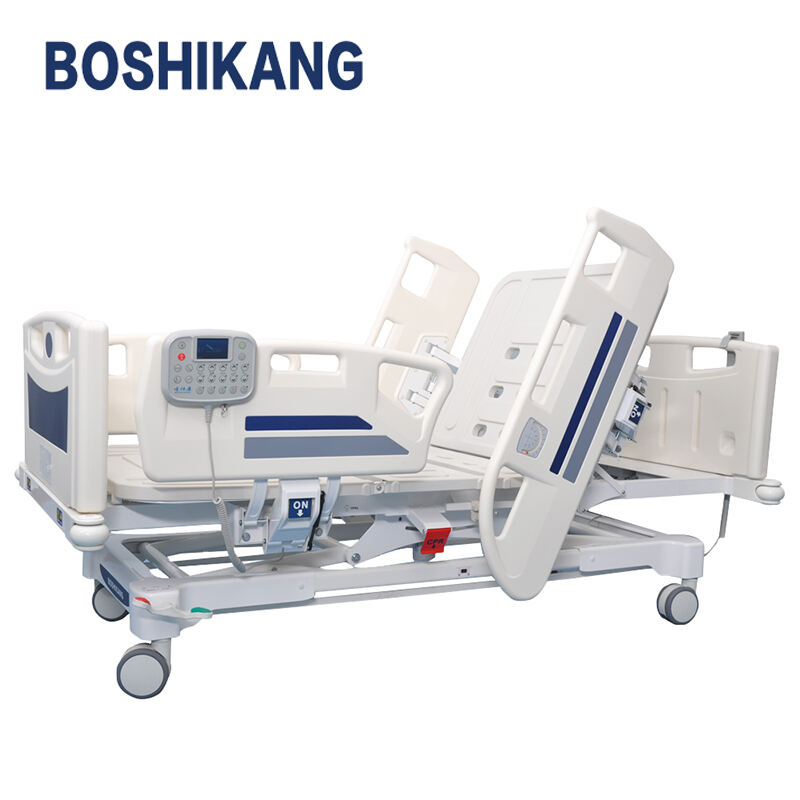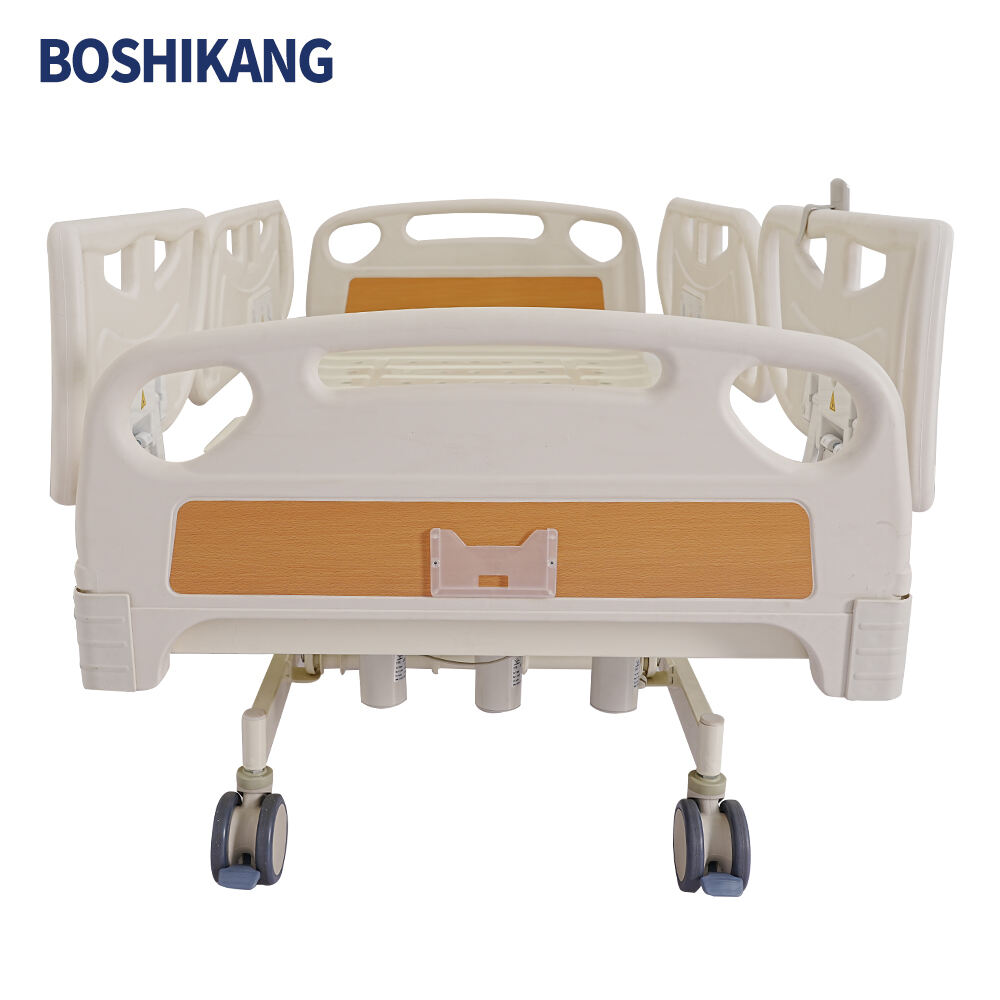Modern healthcare facilities face increasing pressure to deliver exceptional patient care while maintaining operational efficiency. Among the fundamental equipment that directly impacts both objectives, medical beds serve as the cornerstone of patient comfort and clinical workflow optimization. These sophisticated pieces of equipment have evolved far beyond simple resting platforms, incorporating advanced technologies that enhance patient outcomes, reduce caregiver burden, and streamline hospital operations. The strategic selection and implementation of appropriate medical beds can significantly transform how healthcare institutions deliver care, manage resources, and achieve their quality metrics.

Advanced Features Enhancing Patient Care Quality
Positioning Technology for Therapeutic Benefits
Contemporary medical beds incorporate sophisticated positioning mechanisms that enable precise patient positioning for various therapeutic interventions. These systems allow healthcare providers to adjust bed angles, height, and individual section positioning with remarkable accuracy, facilitating optimal patient positioning for procedures, examinations, and recovery protocols. The ability to achieve Trendelenburg, reverse Trendelenburg, and lateral positioning enhances clinical outcomes across multiple specialties, from cardiovascular procedures to respiratory therapy applications.
The integration of memory foam surfaces and pressure redistribution technologies within modern medical beds significantly reduces the risk of pressure ulcers and enhances patient comfort during extended bed rest periods. These features automatically adjust to patient body contours, providing consistent support while minimizing pressure points that could lead to tissue breakdown. Healthcare facilities implementing these advanced positioning systems report measurable improvements in patient satisfaction scores and reduced incidence of hospital-acquired complications.
Integrated Monitoring and Safety Systems
Advanced medical beds now feature integrated monitoring capabilities that continuously track patient vital signs, movement patterns, and bed exit attempts. These smart systems provide real-time alerts to nursing staff, enabling proactive intervention when patients require assistance or when potential safety concerns arise. The seamless integration of monitoring technology reduces the need for additional equipment while providing comprehensive patient surveillance throughout the care continuum.
Safety features embedded within modern medical beds include automated brake systems, side rail controls, and fall prevention mechanisms that adapt to individual patient needs and risk profiles. These systems work in conjunction with hospital information systems to maintain detailed logs of patient positioning, mobility events, and caregiver interactions. Such comprehensive data collection supports quality improvement initiatives and provides valuable insights for optimizing patient care protocols across different clinical departments.
Operational Efficiency Through Smart Bed Technology
Workflow Optimization for Healthcare Teams
The implementation of intelligent medical beds significantly reduces the physical demands placed on healthcare workers during patient care activities. Automated height adjustment, positioning controls, and patient transfer assistance features minimize manual handling requirements, reducing the risk of work-related injuries among nursing staff. These ergonomic improvements contribute to enhanced job satisfaction, reduced absenteeism, and improved staff retention rates within healthcare facilities.
Smart bed systems integrate with electronic health records and nurse call systems, creating seamless communication pathways that streamline patient care coordination. When patients require assistance, the bed system can automatically notify appropriate staff members, provide relevant patient information, and track response times. This integration eliminates communication delays and ensures that patient needs are addressed promptly and efficiently throughout all shifts.
Resource Management and Cost Optimization
Healthcare facilities utilizing advanced medical beds experience significant improvements in resource allocation and operational cost management. The built-in diagnostic capabilities of modern bed systems provide continuous equipment performance monitoring, enabling predictive maintenance scheduling that prevents costly emergency repairs and extends equipment lifespan. This proactive approach to equipment management reduces downtime, minimizes replacement costs, and ensures consistent availability of functional beds across all patient care areas.
The versatility of multi-functional medical beds eliminates the need for specialized equipment in many clinical situations, reducing overall capital expenditure requirements. A single advanced bed unit can serve multiple purposes, from routine patient care to specialized procedures, intensive care monitoring, and rehabilitation activities. This consolidation of functionality maximizes equipment utilization rates while minimizing storage requirements and maintenance complexity across healthcare facilities.
Patient Safety and Comfort Innovations
Fall Prevention and Mobility Support
Modern medical beds incorporate sophisticated fall prevention technologies that actively monitor patient movement patterns and provide early warning systems when patients attempt unsafe mobility activities. These systems utilize weight sensors, motion detectors, and artificial intelligence algorithms to predict potential fall events and alert caregivers before incidents occur. The proactive nature of these safety systems significantly reduces fall-related injuries and associated liability concerns for healthcare institutions.
Mobility support features integrated within advanced medical beds assist patients in achieving safe position changes and movement activities while maintaining appropriate support and stability. Automated assistance for sitting up, repositioning, and transfer activities empowers patients to maintain greater independence while ensuring safety protocols are consistently followed. These capabilities contribute to improved patient dignity, reduced caregiver burden, and enhanced recovery outcomes across various patient populations.
Infection Control and Hygiene Management
Contemporary medical beds feature antimicrobial surfaces, seamless construction materials, and easy-to-clean designs that support rigorous infection control protocols. The integration of UV sterilization capabilities and automated cleaning cycles ensures consistent decontamination between patient uses, reducing the risk of healthcare-associated infections. These infection prevention features are particularly critical in intensive care units, isolation rooms, and surgical recovery areas where patient vulnerability to infections is heightened.
Advanced filtration systems incorporated within medical beds help maintain clean air circulation around patient environments, removing airborne pathogens and allergens that could compromise patient health. These systems work in conjunction with hospital HVAC systems to create optimal healing environments while supporting overall facility infection control objectives. The combination of surface and air purification technologies provides comprehensive protection against infectious agents throughout the patient care experience.
Technology Integration and Future Developments
Internet of Things Connectivity
The integration of Internet of Things technology within medical beds creates comprehensive data networks that support evidence-based decision making and continuous quality improvement initiatives. These connected systems collect and analyze vast amounts of patient data, equipment performance metrics, and operational efficiency indicators that inform strategic planning and resource allocation decisions. Healthcare administrators can access real-time dashboards that provide insights into bed utilization rates, patient satisfaction metrics, and equipment maintenance requirements across their entire facility network.
IoT-enabled medical beds facilitate seamless integration with other hospital systems, including environmental controls, lighting systems, and entertainment platforms, creating personalized patient environments that adapt to individual preferences and clinical requirements. This level of integration enhances patient comfort while supporting optimal healing conditions through precise environmental control and customized care delivery protocols.
Artificial Intelligence and Predictive Analytics
Artificial intelligence algorithms embedded within modern medical beds analyze patient data patterns to predict potential complications, optimal positioning schedules, and personalized care interventions. These predictive capabilities enable healthcare teams to implement preventive measures before problems develop, improving patient outcomes while reducing treatment costs and length of stay requirements. The continuous learning capabilities of AI systems ensure that recommendations become increasingly accurate and relevant over time.
Machine learning applications within medical bed systems support population health management by identifying trends and patterns across large patient groups, enabling healthcare institutions to develop targeted interventions and quality improvement strategies. These insights contribute to evidence-based protocol development and support regulatory compliance requirements while advancing overall standards of care delivery within healthcare facilities.
Implementation Strategies and Best Practices
Staff Training and Change Management
Successful implementation of advanced medical beds requires comprehensive staff training programs that address both technical operation and clinical applications. Healthcare facilities must develop structured training curricula that ensure all staff members understand the full capabilities of their medical bed systems and can effectively utilize advanced features to enhance patient care. Regular refresher training sessions and competency assessments help maintain high standards of equipment utilization and patient safety throughout the organization.
Change management strategies should address potential resistance to new technology adoption and emphasize the benefits that advanced medical beds provide to both patients and healthcare workers. Engaging staff members in the selection process, providing adequate training resources, and establishing clear protocols for equipment use helps ensure successful integration of new medical bed systems into existing clinical workflows and operational procedures.
Maintenance and Lifecycle Management
Effective maintenance programs for medical beds include both preventive maintenance schedules and responsive repair services that minimize equipment downtime and ensure consistent availability of functional beds. Healthcare facilities should establish partnerships with equipment manufacturers or service providers that can provide comprehensive maintenance support, including regular inspections, software updates, and component replacement services. These partnerships help protect equipment investments while ensuring optimal performance throughout the useful life of medical bed systems.
Lifecycle management strategies should consider equipment refresh cycles, technology upgrade pathways, and disposal procedures that align with sustainability objectives and regulatory requirements. Planning for equipment replacement and upgrade schedules helps healthcare facilities maintain current technology standards while managing capital expenditure requirements effectively over time.
FAQ
What are the primary benefits of upgrading to advanced medical beds
Advanced medical beds provide numerous benefits including improved patient safety through fall prevention systems, enhanced comfort via pressure redistribution technology, reduced caregiver workload through automated positioning features, and better clinical outcomes through integrated monitoring capabilities. These beds also offer cost savings through reduced injury rates, improved efficiency, and lower maintenance requirements compared to traditional hospital beds.
How do smart medical beds integrate with existing hospital information systems
Modern medical beds utilize standardized communication protocols to integrate seamlessly with electronic health records, nurse call systems, and hospital management platforms. This integration enables automatic data collection, real-time patient monitoring alerts, and comprehensive reporting capabilities that support clinical decision-making and operational efficiency improvements across healthcare facilities.
What training requirements exist for staff using advanced medical bed systems
Staff training for advanced medical beds typically includes technical operation instruction, safety protocol education, troubleshooting procedures, and clinical application guidelines. Most manufacturers provide comprehensive training programs that can be customized to specific facility needs and staff roles. Ongoing education and competency assessments help ensure optimal utilization of bed features and maintain high safety standards.
How do medical beds contribute to infection prevention in healthcare settings
Medical beds support infection prevention through antimicrobial surface materials, seamless designs that eliminate contamination hiding places, easy-to-clean construction, and some models include integrated UV sterilization systems. These features, combined with proper cleaning protocols, significantly reduce the risk of healthcare-associated infections and support overall facility hygiene management objectives.
Table of Contents
- Advanced Features Enhancing Patient Care Quality
- Operational Efficiency Through Smart Bed Technology
- Patient Safety and Comfort Innovations
- Technology Integration and Future Developments
- Implementation Strategies and Best Practices
-
FAQ
- What are the primary benefits of upgrading to advanced medical beds
- How do smart medical beds integrate with existing hospital information systems
- What training requirements exist for staff using advanced medical bed systems
- How do medical beds contribute to infection prevention in healthcare settings


